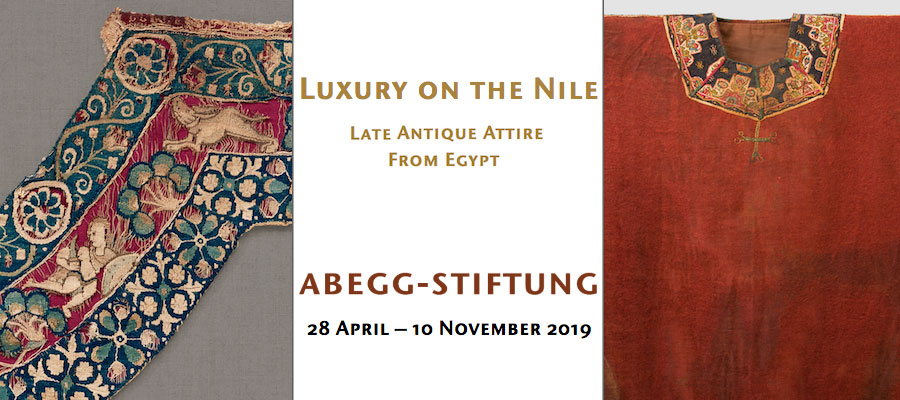Luxury on the Nile – Late Antique Attire From Egypt, Abegg-Stiftung, April 28–November 10, 2019
Expensive, extravagant clothes played an important role in society even 1500 years ago in the Egypt of Late Antiquity. Dress could be a visible expression of dignity, rank and aspiration. But how best to do that in an age when men and women, young and old essentially wore the same outfit?
The Abegg-Stiftung’s new special exhibition sets out to answer this question. In addition to several tunics or fragments of tunics from the period, it also presents numerous small pieces of cloth, which as ornamental appliqués were once sewn onto otherwise unremarkable garments to lend them an individual touch. The Abegg-Stiftung in Riggisberg is in possession of a major collection of textiles dating from the third to the ninth century, a selection of which the museum is now displaying in an exhibition about dress. The show turns and hinges on an item of clothing that is still familiar to us today: the tunic. This simple, wide-cut garment with or without sleeves was the most important item of clothing in the whole of the Mediterranean region. It was worn bymen and women, adults and children of all social classes whether as everyday wear, ceremonial attire or livery. It derived its desired character not from the cut but rather from the materials of which it was made, the dyes colouring it and the ornaments embellishing it. Costly silk or coarse linen, dyed at great expense or left in its natural colour –these are what determined a tunic’s value, as did the number and sophistication of the decorative elements.
